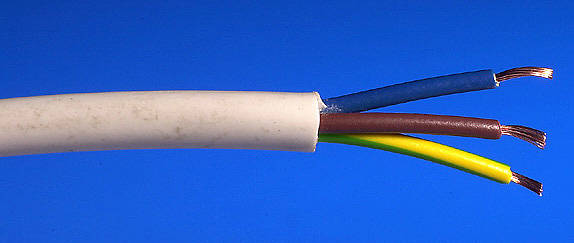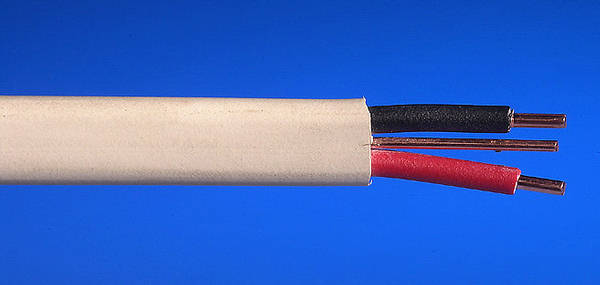the first, all protected, sheaved cores. also solid copper, not strands.
The first pic is of flex, which does not have solid cores and should
not be used for fixed wiring. Do you mean that you have solid-core cable, like the second pic, but with the new brown and blue color coding?
What's this 'it would be normal to read voltages due to capacitive coupling in the cable' about? I should say it is only 5 metres of cable.
Any time you run two conductive surfaces close to one another, they exhibit an electrical characteristic known as capacitance. A cable has two or more conductors, running parallel, with just the insulation separating them, so you always get a certain amount of capacitance between the cores. It's also a characteristic of alternating current (the type supplied to your home) that it will pass through a capacitance.
In most general electrical work, this capacitance within a cable is too small to be of any great significance, but when you have a open-circuit conductor (i.e. disconnected at both ends) in combination with a meter which has a high input resistance, you will see the effects of this capacitance as a voltage reading on the meter.
Many modern digital meters have a very high input resistance wich will show the capacitive effects very well. I just picked up an offcut of 2.5mm T&E cable, about 5 feet long and connected it as you describe: Live to 240V power, neutral and earth wire left open at both ends. I then used a digital meter with 10 megohm input and read 130V to ground on the earth wire, 92V to ground on the neutral. I didn't bother to go any further, but had I then changed to a meter with a lower input resistance, the voltage readings would have been lower.
So you can see it can take only a very short length of cable to give substantial voltage readings. By "test driver" I assume you mean a screwdriver with built-in neon tester. As a neon light is also inherently a high-resistance device, it would be quite normal to get it to glow when touching the open conductors in the cable due to the capacitance.
BTW, for the technical guys here, I didn't bother to dig out my capacitance bridge to measure the capacitance directly, but a rough calculation from the measurements taken would suggest a line-to-earth capacitance in that 5 ft. of cable of about 200 picofarads.




